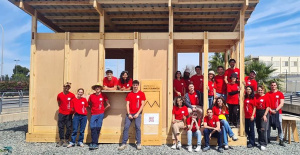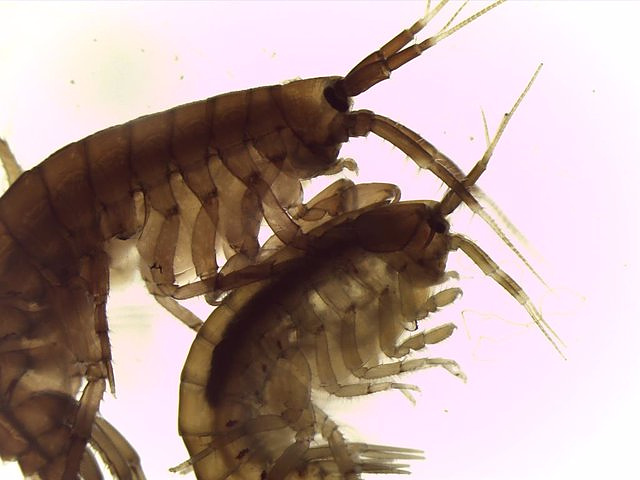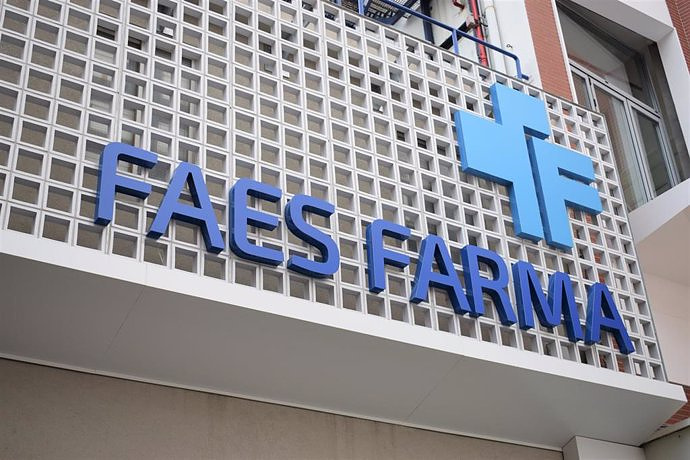VALENCIA, 25 Oct. (EUROPA PRESS) -
A study carried out by members of the Group of Auxiliary Species in Aquaculture, Larviculture and Ecotoxicology, of the Torre de la Sal Aquaculture Institute (IATS) - center of the Higher Council of Scientific Researchers (CSIC) in Castellón - reveals the existence of an association ecological between small crustaceans called gammarids, used as food for aquatic animals, and a freshwater microorganism (badelloid rotifers).
According to the study, these two organisms have had to converge evolutionarily, as evidenced by comparisons between gene sequences from samples extracted by the IATS-CSIC team.
The mechanism by which these small crustaceans obtain omega-3 fatty acids, essential in the diet of farmed fish, is thus discovered. The research, published in the journal 'Open Biology', is part of Alberto Ribes Navarro's doctoral thesis.
In search of sustainability, the aquaculture industry continually explores alternative ingredients to meals and oils produced from industrial fishing. Although there are substitute feeds of terrestrial origin, those of marine origin have a superior nutritional profile due to their richness in omega-3.
The intensive production of marine invertebrates such as gammarids can help meet nutritional quality objectives if they are included as ingredients in feed, which is why it is very common to carry out nutritional profile studies. It is therefore essential to clarify the capacity for synthesis of omega-3 fatty acids in these invertebrates. The IATS-CSIC team has been a pioneer in carrying out molecular studies in gamarids that have made it possible to understand this biosynthetic capacity.
Previously published research suggested that freshwater gammarids had developed the ability to produce omega-3. The presence of this nutrient in freshwater ecosystems is minimal, so its acquisition in this environment "is an evolutionary challenge," says Alberto Ribes.
Saltwater mammals cannot produce omega-3 either, although they acquire it more easily from the ecosystem where they live, rich in these compounds, through their diet based on zooplankton and microalgae, "just as humans acquire omega-3 , through fish and seafood," explains the IATS-CSIC doctoral student.
Through the gene expression study, IATS-CSIC researchers have shown that these small freshwater crustaceans do not have "all the necessary gene machinery" for the production of omega-3, so they must obtain these nutrients through other ways. Through an evolutionary study "we observed that the sequences we found in the transcriptomes of freshwater gamariids were not typical of the gamariid, but rather of a freshwater aquatic microorganism called rotifer," explains Ribes.
Rotifers are microscopic animals that adhere to the exoskeleton of the gammarid. The ecological association is important because it has been observed that, regardless of geographical location, "all the freshwater gammarids studied contain rotifers in their exoskeleton, but the most surprising thing is that they all have the same types of rotifers from the zoological class Bdelloidea" clarifies the IATS-CSIC researcher.
These rotifers are characterized by having all the genes necessary to produce omega-3, "very possibly this association transcends the already wide geographical scope of this study, and is widespread," reflects Alberto Ribes Navarro.
Evolutionarily, these two organisms have had to converge from an ecological point of view and "establish some symbiotic relationship, like that of the remora fish and the shark, or that of the clown fish and the anemone," points out the doctoral student. This gammarid-rotifer association demonstrates that it is a mechanism that "produces benefits, as observed through its proliferation throughout a large part of Eurasian freshwater bodies."
The significant novelty of the research lies in the "evidence that the potential for omega-3 synthesis comes from the rotifer and not from the gammarid, which opens the door to interesting questions such as the potential contribution of omega-3 from the former to the latter." "concludes Alberto Ribes Navarro.

 Exploring Cardano: Inner Workings and Advantages of this Cryptocurrency
Exploring Cardano: Inner Workings and Advantages of this Cryptocurrency Seville.- Economy.- Innova.- STSA inaugurates its new painting and sealing hangar in San Pablo, for 18 million
Seville.- Economy.- Innova.- STSA inaugurates its new painting and sealing hangar in San Pablo, for 18 million Innova.- More than 300 volunteers join the Andalucía Compromiso Digital network in one month to facilitate access to ICT
Innova.- More than 300 volunteers join the Andalucía Compromiso Digital network in one month to facilitate access to ICT Innova.-AMP.- Ayesa acquires 51% of Sadiel, which will create new technological engineering products and expand markets
Innova.-AMP.- Ayesa acquires 51% of Sadiel, which will create new technological engineering products and expand markets Marc Márquez returns to pole in Jerez
Marc Márquez returns to pole in Jerez The CIS carries out a quick survey on Sánchez's letter to measure the reaction of citizens
The CIS carries out a quick survey on Sánchez's letter to measure the reaction of citizens 12M.- Puigdemont to Sánchez and Illa: "This is not about the future of the PSOE! What have you believed?"
12M.- Puigdemont to Sánchez and Illa: "This is not about the future of the PSOE! What have you believed?" Díaz proclaims that "the Government is not going to bow down" and asks not to be "on the defensive and locked in" against the right
Díaz proclaims that "the Government is not going to bow down" and asks not to be "on the defensive and locked in" against the right How Blockchain in being used to shape the future
How Blockchain in being used to shape the future Not just BTC and ETH: Here Are Some More Interesting Coins Worth Focusing on
Not just BTC and ETH: Here Are Some More Interesting Coins Worth Focusing on UPV students build a prototype of a wooden house to move to Equatorial Guinea
UPV students build a prototype of a wooden house to move to Equatorial Guinea The UA opens the call for the Impulso 2024 Awards for the best innovative business initiatives
The UA opens the call for the Impulso 2024 Awards for the best innovative business initiatives ALI, virtual assistant from Alicante, internationally recognized by the OECD
ALI, virtual assistant from Alicante, internationally recognized by the OECD Retrópolis brings the golden age of video games and computing to the UPV
Retrópolis brings the golden age of video games and computing to the UPV A million people demonstrate in France against Macron's pension reform
A million people demonstrate in France against Macron's pension reform Russia launches several missiles against "critical infrastructure" in the city of Zaporizhia
Russia launches several missiles against "critical infrastructure" in the city of Zaporizhia A "procession" remembers the dead of the Calabria shipwreck as bodies continue to wash up on the shore
A "procession" remembers the dead of the Calabria shipwreck as bodies continue to wash up on the shore Prison sentences handed down for three prominent Hong Kong pro-democracy activists
Prison sentences handed down for three prominent Hong Kong pro-democracy activists ETH continues to leave trading platforms, Ethereum balance on exchanges lowest in 3 years
ETH continues to leave trading platforms, Ethereum balance on exchanges lowest in 3 years Investors invest $450 million in Consensys, Ethereum incubator now valued at $7 billion
Investors invest $450 million in Consensys, Ethereum incubator now valued at $7 billion Alchemy Integrates Ethereum L2 Product Starknet to Enhance Web3 Scalability at a Price 100x Lower Than L1 Fees
Alchemy Integrates Ethereum L2 Product Starknet to Enhance Web3 Scalability at a Price 100x Lower Than L1 Fees Mining Report: Bitcoin's Electricity Consumption Declines by 25% in Q1 2022
Mining Report: Bitcoin's Electricity Consumption Declines by 25% in Q1 2022 Oil-to-Bitcoin Mining Firm Crusoe Energy Systems Raised $505 Million
Oil-to-Bitcoin Mining Firm Crusoe Energy Systems Raised $505 Million Microbt reveals the latest Bitcoin mining rigs -- Machines produce up to 126 TH/s with custom 5nm chip design
Microbt reveals the latest Bitcoin mining rigs -- Machines produce up to 126 TH/s with custom 5nm chip design Bitcoin's Mining Difficulty Hits a Lifetime High, With More Than 90% of BTC Supply Issued
Bitcoin's Mining Difficulty Hits a Lifetime High, With More Than 90% of BTC Supply Issued The Biggest Movers are Near, EOS, and RUNE during Friday's Selloff
The Biggest Movers are Near, EOS, and RUNE during Friday's Selloff Global Markets Spooked by a Hawkish Fed and Covid, Stocks and Crypto Gain After Musk Buys Twitter
Global Markets Spooked by a Hawkish Fed and Covid, Stocks and Crypto Gain After Musk Buys Twitter Bitso to offset carbon emissions from the Trading Platform's ERC20, ETH, and BTC Transactions
Bitso to offset carbon emissions from the Trading Platform's ERC20, ETH, and BTC Transactions Draftkings Announces 2022 College Hoops NFT Selection for March Madness
Draftkings Announces 2022 College Hoops NFT Selection for March Madness























